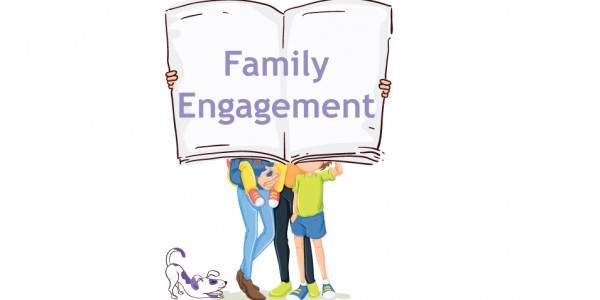FAMILY ENGAGEMENT AND LANGUAGE BARRIERS
Article 1
- This article discusses how Latino parents participate in school less than parents of other ethnic groups, which is frequently linked, though not scientifically verified, to low English language competence.
- Parents say that their inadequate English proficiency is a major obstacle, despite their strong desire to assist their children with their studies and interact with their instructors.
- Furthermore, educators frequently view lesser levels of parental participation in their children’s education as an indication of disinterest in their children’s academic performance.
- The author’s purpose is to inform that low English proficiency reduces parents’ confidence in their capacity to support their children’s academic needs and speak up for them in the classroom, which in turn lowers parental participation in the school.
- I selected this source because it gives great definitions as to what the issue is concerning the language barrier and how it’s affected when it comes to family learners. It also provides you with additional sources that were used for this article, which are as well very helpful.
https://www.ncbi.nlm.nih.gov/pmc/articles/PMC8635069/

Article 2
- In this article, the obstacles that families of English learners have in getting their families involved in school are discussed.
- Families face many difficulties, such as time constraints, linguistic and cultural barriers, and different mindsets. Highlighting the goals and strengths of families may ignite a supporting network of interactions.
- The Family Engagement Lab, which enhances student accomplishment by bolstering family involvement in schools to assist learning—especially for English Learners—is a help/solution discussed by the author. Family Engagement Lab facilitated a gathering of parents to discuss parent-teacher partnerships at their elementary school.
- The author’s goal is to educate educators on methods for overcoming “barriers to family involvement” and instead “leveraging strengths through family engagement”.
- I chose this article because it discusses the obstacles families face and how they affect involvement. Additionally, it discusses The Family Engagement Lab, a little program that might improve family participation.

Article 3
- This article discusses how effective communication is the foundation of healthy interactions with families. Regarding how families ought to express their requirements and impart information and understanding.
- Families have access to possibly the most effective instrument available: positive communication. A solid collaboration with families may be established and strengthened via effective communication, which also serves to reassure, inform, and involve families.
- Programs must employ communication strategies that take into account the varied linguistic and cultural backgrounds of the families they assist. Every family is imparting to their young children the skills necessary to succeed in their particular customs, values, and culture.
- The author hopes to raise awareness of the value of family communication, as well as the characteristics of good communication and the obstacles to it. She also hopes to highlight the components of responsible family information gathering and provide helpful strategies for sharing child information with families.
- I selected this source because it’s very well organized. It states its objective clearly, it’s not focused on ECE, but it does mention the importance of family engagement and participation by providing very useful information.
https://www.virtuallabschool.org/preschool/family-engagement/lesson-3

Article 4
- This article discusses how parents’ knowledge of English may be restricted. The article discusses how having an interpreter may greatly facilitate effective communication, but in the event that one is unable to do so, it offers suggestions for using various tactics, advice, and guidelines to effectively interact with parents who do not speak English.
- It discusses how to alter communication styles. Parents ought to be encouraged to write things down on paper if necessary, as this will aid in their memory of the topics covered.
- The author wants readers to know that parental participation in education is the single most important element influencing students’ academic achievement. However, it might also take a lot of time. This article provides resources to help overcome time constraints and enhance parent-education center contact.
- I selected this source because aside from providing information on engaging with non-English-speaking parents, it’s a website where I believe you can create an account and learn more and participate in more tools that are provided.

Article 5
- This source is A Guide for Writers on Addressing Linguistic and Cultural Differences. You may learn about policies, professional development, administrative procedures, guidelines for writers, classroom procedures, and dual language learning.
- It provides information on how authors should apply guidelines to make sure their work is meaningful and respectful of the widest possible readership, in accordance with the 1995 policy statement on cultural and linguistic diversity from NAEYC.
- Gives details on classroom procedures, how some multilingual early care educators communicate with children and families in their native tongues, People of different languages and cultures are visible, equal, and deserving of celebration, and this must be made apparent in content that focuses on marketing, recruiting, orienting new families and staff, and developing a program’s goal and vision.
- The author wants to educate readers on the fundamentals of supporting dual language learners: an introduction for teachers of young children (birth to age eight).
- I selected this article because it gives in-depth information about Cultural and Linguistic Disparities and about the learning of more than one language. At the end of the article, it also provides a link you can use for more information.
